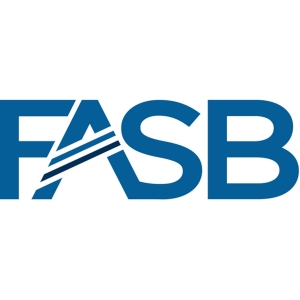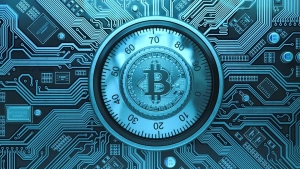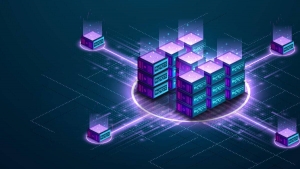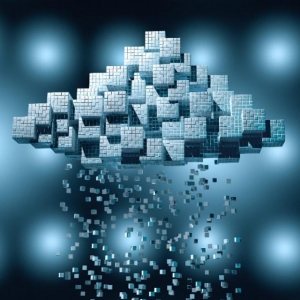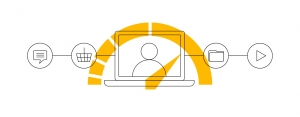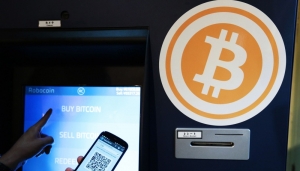عرض العناصر حسب علامة : blockchain
يوافق FASB على معيار الأصول المشفرة
صوت مجلس معايير المحاسبة المالية (FASB) على إصدار معيار الأصول المشفرة الذي سيتطلب من الكيانات الإبلاغ عن مقتنيات العملات المشفرة القابلة للاستبدال باستخدام معيار قياس القيمة العادلة.
هل blockchain فرصة للمحاسبين أم تهديد
تمثل تقنية Blockchain كلاً من التهديدات والفرص للمحاسبين ومحترفي مسك الدفاتر. بغض النظر فهي تعتبر جزء من مستقبل المحاسبة.
ما هو البلوكتشين
لقد تغير العالم بشكل جذري منذ اختراع أجهزة الكمبيوتر. مع الإنترنت، والعمل من المنزل، والعملة الرقمية، ظهرت العديد من التقنيات أخرى. واحدة من هذه التقنيات هي blockchain. ما هو blockchain وكيف يمكن أن يؤثر على عملك؟
معلومات إضافية
-
المحتوى بالإنجليزية
The world has drastically changed in the time since the invention of computers. With the rise of the internet, working from home, and digital currency, other technologies have come into play. One of those technologies is the blockchain. What is blockchain, and how can it impact your business?
What is the blockchain?
Computer databases are digital storage systems. So, what is blockchain technology? Blockchain technology is a form of computer database designed to decentralize and secure electronic data security. The new database form is unique because its design allows for security without using another trusted third party. And, the way it stores information is different from standard databases.
How does a standard computer database work? Generally, a standard database (aka a centralized database) puts data into a structured format, like a table on a spreadsheet. The database lists related information in tables and rows, and each row is called a record. The record includes data about a person, place, or thing (e.g., customers). Then, a third party typically encrypts that information.
So, how does a blockchain differ from a standard database? And, how does blockchain work? Blockchain stores data in chunks of information (i.e., blocks). Once a block is filled with data, the box locks and links to a new block where it stores more information. And, it stores each added piece of information chronologically.
Think of blockchain like a packing box. You fill the box with items, tape it closed when it’s filled, and then put a new, empty box on top to start filling. But once a box is sealed, you cannot change, alter, or destroy anything in that box.
Centralized vs. decentralized databases
Again, standard databases are centralized. What does that mean? A centralized database means that one desktop, server, or mainframe computer holds all the electronic data in a central location. So, one person or company controls the mainframe that houses the data. Businesses may have their own central server that contains all of the information for the company in one location.
By contrast, a blockchain is decentralized. The data held in the blockchain database is spread out among different networks, creating multiple copies of the information to ensure the accuracy of the information. This is why the information in a blockchain is irreversible and “locked” when the block is filled. Changing information in one copy of the blockchain does not change the information in other copies, so the information remains locked and permanent.
In a decentralized database, no one person or company controls the database. Instead, the database is spread across multiple sources to create a shared database.
Photo of a comparison between a centralized database structure and a blockchain database structure.
How does blockchain protect data?
Blockchain tech does not rely on trusted third parties to protect the data in a database. Instead, the blockchain uses the technology’s decentralized nature to protect the data.
In a standard database, a computer virus can infect the entire server because the information is stored in one area. A computer hacker can unleash a virus, worm, or another type of malware into the computer system to corrupt or delete data. If this happens, the information is lost. Or, you could spend a lot of time trying to recover the data.
All too often, a centralized server is the only copy of the data. In that case, losing the data due to malicious software can lead to disaster.
With a blockchain, the data is spread out over multiple sources. A change in one copy does not change the other copies. And, the algorithm can quickly locate the change to one copy. So, if a hacker tries to use a virus to destroy data in one blockchain, the information is not lost. And if someone alters the information in one block of the chain, then the original data does not change with it, so the algorithm can quickly locate where the change occurred.
The process of creating copies has an added benefit. There is an established timeline and order of events in the blockchain. So, users can identify when the change took place, too.
رسالة دكتوراه: رقمنة الصكوك المالية الإسلامية بإستخدام تكنولوجيا سلسلة الكتل Blockchain وإنعكاسها على تفعيل الإفصاح عن الشمول المالي
فى ظل تزايد إهتمام الحکومة المصرية بتعزيز مستويات الشمول المالى کأحد المحاور الرئيسية للتنمية الإقتصادية المستدامة فى مصر، وتعديل قانون سوق رأس المال بالقانون رقم 17 لسنة 2018 ليشمل أحکام تفصيلية لإصدار الصکوک المالية الإسلامية، تمثل الهدف الرئيس لهذا البحث فى دراسة دور تکنولوجيا سلسلة الکتل فى إصدار الصکوک المالية الإسلامية لتفعيل الإفصاح عن الشمول المالى
معلومات إضافية
- البلد مصر
رسالة دكتوراه: الأثر المحاسبي لخصائص تكنولوجيا سلاسل الثقة Blockchain على كفاءة سلاسل التوريد
تناولت هذة الدراسة الأثر المحاسبي لخصائص تکنولوجيا سلاسل الثقة Blockchain المتمثلة في خاصية التحقق والمشارکة والتتبع والقابلية للبرمجة علي کفاءة سلاسل التوريد
معلومات إضافية
- البلد مصر
اتجاهات المحاسبة في الغد
معلومات إضافية
-
المحتوى بالإنجليزية
In our lifetimes, we’ve all seen technology accelerate every industry it touches. Based on my more than 20 years of experience working in the accounting tech industry, I’ve witnessed this transformation firsthand. Most accountants already use digital tools and are optimizing processes to go paperless. Yet as technology continues to advance and further automate numerous functions, conversations turn to the prospect of human-less accounting.
Will Accountants Be Replaced By Robots?
The short answer is no. Discussions of a robot revolution are honestly more sensational than factual. In the real world, the technologies transforming the financial industry will in no way render the human factor redundant.
Instead, technologies like the cloud, artificial intelligence (AI) and blockchain will empower accountants -- and the entire financial services industry -- by reducing manual data entry and improving the speed, accuracy and quality of data.
PROMOTED
Accountants who embrace the trends below will have a greater capacity to advance their roles as trusted, value-added advisers and analysts -- rather than number-crunchers or the dreaded “bean counter.”
Harnessing The Power Of The Cloud
By 2026, the global market for accounting software will have a value of $11.8 billion (subscription required), according to Accounting Today. Digital is already a given in the accounting industry. With cloud accounting and software-as-a-service (SaaS) applications and the ability to access financial data from any internet-enabled device, virtualization is the new norm.
The growing ecosystem of applications that integrates with accounting platforms has also proven to be efficient by connecting and streamlining back-office processes for a wide range of businesses and industries.
A counterpoint to cloud adoption rates: Neither desktop nor enterprise software will be going away anytime soon. One of the greatest examples of this is while QuickBooks Online reached 2 million subscribers worldwide in 2017, there’s still a substantial user base for QuickBooks Desktop. Of those online subscribers, 80% are first-time users for any kind of accounting software. These users aren’t migrating from desktop to the cloud; they’re starting online. As the target users for QuickBooks Online are small to medium-sized businesses, accountants play a pivotal role in introducing businesses to the cloud.
Accelerating Automation
By 2020, labor-intensive tasks like tax preparation, payroll, audits and banking will be fully automated -- a trend that’s considered the greatest transformation since the introduction of double-entry bookkeeping 500 years ago.
Artificial intelligence (AI) and machine learning won’t make human intelligence extinct. What they’ll actually do is give accountants better access to a range of near-real-time information from a greater number of sources.
For example, a big-picture part of what one of my companies, PayPie, will be doing is using blockchain and smart contracts to exchange secure information between businesses and lenders. AI components will be used to verify the information and ensure that both parties see the information in near-real time.
While algorithms will continue to get more powerful and efficient at compiling big data, computers are only great transactional machines. They can’t replace the interpretive capacity of the human mind. It’s also pretty hard to teach a machine common sense.
Technology will give us access to better data, but accountants are the ones who’ll have to apply this information to the real world to provide crucial business insights and intelligence.
Breakthroughs Via Blockchain
Assuming that cryptocurrencies are the only use for blockchain is like thinking that binge-watching is the only use for online streaming. At the recent Accounting and Finance Show L.A., blockchain (subscription required) and smart contracts dominated conversations.
A single-ledger technology, blockchain is a delivery method that lets users from several sources access the same information in near-real time. For instance, if a business’ risk profile is hashed (tied) to the blockchain, the business and its potential lenders or investors can all access the profile simultaneously.
رسالة ماجستير: أثر تقنية سلسلة الكتل Blockchain على خفض تكلفة الخدمات المصرفية والإرتقاء بها بالبنوك المصرية
استهدفت الدراسة إلي إبراز دور تقنية سلسلة الکتل Blockchain في التعزيز من الکفاءة التشغلية وتخفيض تکلفة الخدمات المصرفية والارتقاء بها بالبنوک العاملة في مصر
معلومات إضافية
- البلد مصر
كيف تعمل الثقة على تسريع التحول؟
معلومات إضافية
-
المحتوى بالإنجليزية
Trusted data and technology fuel new ways of working. Just ask Microsoft Xbox’s gaming ecosystem.
A version of this article was first published in MIT Technology Review in December 2020.
In brief
Trust is an essential ingredient for accelerated transformation and innovation.
Unless organizations anticipate and close the potential trust gaps, customers, markets and regulators will not embrace their new tech-driven innovations.
To close trust gaps, organizations must embed trust in data and technology from the outset, using an approach we call Trusted Intelligence.
Related article
Four ways organizations can prepare for a digital future
Four ways organizations can prepare for a digital future
If digital is fully integrated into a company's strategy, it can benefit all e…
10 Feb 2021 Richard Suhr
We are living in a time of increasingly intelligent technologies, when an organization’s ability to be trusted really matters. But the way data and intelligent technologies such as AI are being used is creating significant trust gaps. For example, the public feels that intelligent technology is moving too fast and that regulators can’t keep up, as documented in the 2020 Edelman Trust Barometer.
There are plenty of high-profile examples of data misuse and unintended outcomes from AI usage that have contributed to these gaps. One small example took place this June when an AI tool to reconstruct pixelated photos turned a photo of Barack Obama into a white man. It became a matter of hot debate in the AI community: was the bias towards creating more photos of white people than people of color the result of incomplete data or indicative of the racial bias baked into AI from non-diverse datasets and development teams?
Trust gaps have reframed the question of “Can tech do this?” into “Should tech do this?” It’s no longer about capabilities. It’s about trust in the intelligence that a business uses, and that customers, markets, regulators and ecosystems rely on. Can companies and government organizations ensure the outcomes of their technologies? Do they have reliable methods for identifying, tracing and correcting unintended outcomes? Without trust, the ability of an organization to operate and innovate is reduced and slowed down.
Trust in data and technologies results from action. There are methods and techniques that embed trust into data, trust into systems, trust into business models to create sustained value and empower transformation. At EY, we call this Trusted Intelligence.
Trust is not something you can bolt on. It has to be designed into data and intelligent technologies from the outset.
Marco Vernocchi
EY Global Chief Data Officer
How EY can help
Blockchain platforms
The future of doing business will be through tokens and smart contracts, enabled by blockchain. EY has a clear vision and strategy for how blockchain is digitalizing and integrating supply chains by knitting together business operations and finance at the ecosystem level.
Read more
“Trust is not something you can bolt on. It has to be designed in from the outset,” said Marco Vernocchi, EY Global Chief Data Officer. Trusted Intelligence embeds trust in a tangible way that embraces behaviors, processes, business models and outcomes as data moves through technology and the organization — accelerating transformation and the creation of long-term value.
Trusted Intelligence in action: the Xbox ecosystem
With thousands of developers, publishers, authors, designers, production houses and distributors, Microsoft’s Xbox gaming platform is a complex ecosystem of relationships. Collaboration across this ecosystem is key to producing a high-quality product that attracts the best talent and satisfies consumers – but Microsoft recognized there were points of friction that needed to be addressed.
A multitude of manual processes and siloed systems meant that developers and publishers couldn’t link complex calculations for royalties to the underlying data. As a result, they had to spend time and resources reconciling, validating and tracing back the transactions, then recalculating royalties to verify accuracy. Distributors found it difficult to reconcile data from different sources.
To cut through complexity and increase trust in the data, Microsoft and the EY organization partnered to co-develop the solution. The result was the first blockchain-based financial system of records for processing end-to-end royalty transactions, from contract creation through to integration with SAP for payments. The blockchain solution provides near real-time access to authentic trusted transactions data from source systems to game publishers, who can click and drill-down from transactions to source contract terms agreed with Microsoft.
The upshot? Publishers can access information on royalties earned in just 4 minutes instead of 45 days after month end. Royalties administration costs have been slashed. Increased trust in the royalties intelligence has given the ecosystem greater visibility of the underlying data. Microsoft benefits from faster, more efficient processes and lower operational costs.
With trust, everything moves more smoothly. Collaboration is easier. Innovation drives value. Technology can be deployed at speed.
How EY can help
Digital Transformation services
We help companies thrive in the transformative age by refreshing themselves constantly, experimenting with new ideas and scaling successes.
Read more
Embedding trust
Looking at the Xbox story, we can see that trust has been embedded into the intelligence of the business in a variety of ways:
Data from a multitude of manual workflows and unintegrated systems has been replaced with trusted data
Trusted data is also created by automating complex royalty calculations, product tokenization and onboarding smart contracts using AI based on secure cloud technologies
Trust is maintained through the blockchain-based system of record that generates invoices and statements with integration to SAP for settlement and processing of payments, as well as post-accounting journals
And finally, trust is embedded into how people work by applying clear rules and transparent processes
As businesses strive to carve out competitive advantage, applying Trusted Intelligence is creating a new frontier of opportunities to accelerate a distinctive digital transformation.
Accelerated transformation
While digital transformation was well underway prior to the pandemic, COVID-19 stepped up the pace. In a recent EY webcast on the impact of COVID-19 on customer experience with nearly 2000 participants, 82% said they were accelerating digital transformation.
This confirms what we’re experiencing with our clients in the market. We know that those achieving radical and exponential value creation are responding to three key drivers:
The ability to put humans at the center of what they do: When it comes to customers, value creators have shifted their orientation from “How do we get more customers to buy what we make or do?” to “How do we give customers more of what they want?” This change in mindset is backed by truly engaged employees who feel motivated and energized by their company’s purpose.
Deploying technology at speed: In other words, moving at the speed that today’s customers and employees expect and demand. This means automation through AI and other intelligent technologies, as well as cloud-based services. It means using agile methodologies and technology that helps you respond to dynamic conditions.
Innovating at scale: Organizations need to innovate on two levels – survival today and success tomorrow. It’s like a muscle that needs to be continuously flexed. Collaboration is the name of the game, for example through leveraging ecosystems of partnerships and alliances. To turn innovative ideas into value that is embraced by customers, citizens, markets and societies, it has to be built using large volumes of data, intelligent technologies and cloud infrastructure that are trusted.
Each of these drivers is amplified by Trusted Intelligence. Embedding trust into data is how data links to value, and how organizations can reduce trust gaps and accelerate their digital transformation.
إرشادات حول مخاطر التدقيق للعملات المشفرة
أصدر المعهد الأمريكي للمحاسبين القانونيين AICPA والمعهد القانوني للمحاسبين الإداريين CIMA إرشادات مشتركة يوم الثلاثاء للتدقيق والمحاسبة لمخاطر الأصول الرقمية مثل العملة المشفرة.
معلومات إضافية
-
المحتوى بالإنجليزية
AICPA, CIMA offer audit risk guidance for crypto
By Michael Cohn
May 25, 2021, 1:15 p.m. EDT
2 Min Read
Facebook
Twitter
LinkedIn
Email
Show more sharing options
The American Institute of CPAs and the Chartered Institute of Management Accountants jointly released guidance Tuesday for auditing and accounting for the risks of digital assets such as cryptocurrency.
The AICPA and CIMA updated their practice aid, “Accounting for and auditing of digital assets,” with new nonauthoritative guidance on audit risk assessment, along with processes and controls, laws, and regulations and related parties. The practice aid was originally released in 2019, but was updated last year and now with the new information on audit risk assessment.
Cryptocurrency investing has caught on increasingly in recent years, particularly in the past year, when digital currencies like Bitcoin, Ethereum and Dogecoin have seen remarkable growth in prices. However, a recent downturn in the market has led to worries among crypto investors, who are also concerned about increasing regulation from the Securities and Exchange Commission and efforts by the Internal Revenue Service to require improved reporting of crypto transactions to discourage tax evasion and money laundering.
Yuriko Nakao/Bloomberg
The guidance was developed by members of the AICPA & CIMA Digital Assets Working Group (DAWG) and their staff and is specific to the U.S. generally accepted auditing standards (GAAS). “There are challenges and unique considerations when auditing an entity that holds or transacts with digital assets,” said Diana Krupica, lead manager of emerging assurance technologies at the AICPA and CIMA, in a statement. “From performing risk assessment procedures and understanding new processes and controls to identify related parties, it is important for auditors to look through the lens of digital assets and understand exactly what audit procedures need to be performed. We hope this latest guidance will help auditors consider the potential risks unique to the digital assets environment.”
Web Seminar Execute your data driven audit
The journey toward a fully data-driven audit that utilizes AI begins by first effectively leveraging automation and analytics in your audit workflow.
SPONSOR CONTENT FROM WOLTERS KLUWER
The practice aid now includes material explaining how to understand and evaluate an entity’s risk assessment processes and controls. It discusses the specific considerations that could be important when performing risk assessment procedures, such as the kinds of procedures that auditors can perform, or are required to perform, to identify and determine the risks of a material misstatement in audits of entities that participate in the digital asset or crypto environment.
Another section discusses laws and regulations, along with related-party transactions. It describes the particular challenges and potential procedures that auditors should consider to comply with laws and regulations, along with the identification, accounting and disclosure of related parties in an audit of an entity that holds or transacts with digital assets.
A new appendix,Blockchain Universal Glossary, has been added to the practice aid that was developed as a reference for all AICPA and CIMA blockchain and digital assets-related content. It defines digital assets as going beyond cryptocurrency, defining them broadly as digital records, made using cryptography for verification and security purposes, on a distributed ledger such as a blockchain. “Although all industries encounter change, the digital assets ecosystem is evolving rapidly,” the AICPA and CIMA warned. “As firms seek to provide audits to entities within the ecosystem, caution and consideration must be given to unique risks and challenges.”
أهم 10 تنبؤات تقنية لعام 2021
أحدث العام الماضي تغييرات كبيرة في كيفية تعامل شركات المحاسبة وعملائها مع التحول الرقمي والتجاري، ولكن السؤال الكبير هو، "ما هي استراتيجيتنا للمضي قدمًا؟"
معلومات إضافية
-
المحتوى بالإنجليزية
1. The pipe gets bigger
business-and-it.jpg
alphaspirit - Fotolia
Bandwidth speeds will increase, and prices decrease, resulting in a continually improving virtual experience.
2. Getting more at home in Zoom
online-zoom-meeting.jpg
Ģirts Raģelis/Girts - stock.adobe.com
Virtual meetings will continue to be popular. Firms will formalize their processes and agendas, creating a better client experience.
3. Opportunities in blockchain and crypto
Bitcoin
Picasa/3dsculptor - Fotolia
Blockchain and crypto will grow exponentially, increasing consulting, financial reporting and tax compliance opportunities.
4. Efficient and effective
RPA robotic process automation dial
Olivier Le Moal/Olivier Le Moal - stock.adobe.com
Automation and continuous process improvement will lead to competitive advantages for firms that are innovative and focused beyond optimization.
5. Hearing from IT and marketing
Joining hands in a circle art
Konstantin Postumitenko/Prostock-studio - stock.adobe.com
Technology and marketing get seats at the table, and must lead at a higher level and produce agile results. Technology and marketing must co-elevate to reach their potential.
6. From vendor to partner
partnership-image.jpgVendor relationships are strategic and must be managed from a strategic rather than a transactional perspective.
7. Spatial technologies
Spatial technologies will augment physical spaces and relationships.
8. 2+2=5
Technology gap
Sergio Donà/itestro - stock.adobe.com
Emerging technology will accelerate and enable innovative firms through a convergence of multiple technologies (e.g., robotics, machine learning and process improvement).
9. Data everywhere
data-small.jpg
Nikita Gonin/ninog - Fotolia
Business intelligence and data analytics continue to grow in importance to all service lines. Data is an asset.
10. Know where you're going
p19j2j3ns58kr1b4v1ti41np21dm98.jpgA vision, strategic plan and IT roadmap are essential, along with an innovative process.

